Each day, the rapid advancement of technology is growing. Yet, it does not fail to entertain us, whether playing games on mobile phones in the real world with AR (augmented reality) or AI chatbots talking to us and having a real conversation. Due to the rapid evolution and advancement of technology, ML (machine learning) is now no longer a strange thing to us. Machine learning app development is gaining much popularity and momentum recently because of user needs and greater efficiency. Artificial Intelligence and Machine learning apps are not new in the mobile app industry but it still attracts and engages users through the easy usability that it enables and their smart results, which improve performance.

If the concept of (ML) machine learning development is new and advanced for you, this blog will be really helpful for you; I’ll discuss the complete guide for Machine Learning app development, through which you can make a robust and secure app without making any mistakes. First, let’s understand what machine learning is.
Market Scenario of Machine Learning
- Machine learning is a digital transformation, and by the end of 2021, is estimated to have received USD 58 billion in cumulative investment.
- The (machine learning) ML industry growth is predicted to reach around USD 9 billion in the latter part of 2022 at a compound annual growth rate (CAGR) of approximately 42%.
- According to MarketsAndMarkets, the Artificial Neural Network Market size grew from $117 million in 2019 to $296 million by 2024, at a CAGR (Compound Annual Growth Rate) of 20.5%.

- By 2024, the neural network market is anticipated to be worth over USD 23 billion approximately.
What is Machine Learning?
When people think about machine learning (ML), they think of logistics, forums, calculus figures in the air, lots of numbers, and almost every important, relevant thing. Well, it is mandatory to simplify the meaning of the concept. It is the science or the process where computers are programmed to learn and adapt things like humans to deliver some result.
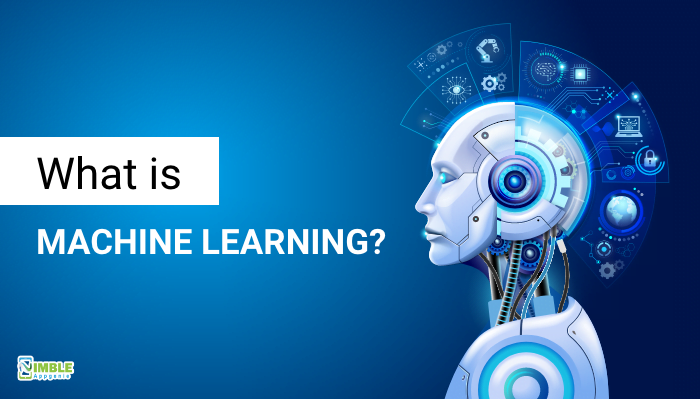
Generally, Machine Learning is the science of getting computers trained and understanding and acting as humans do. This can be done by autonomously improving their learning by feeding them data and information in observations and real-world interactions. The Machine learning algorithms used in machine learning app development could be divided into three ways:
1. Supervised Machine Learning
The software learns the data based on the input and output of a particular instance in supervised learning. Then, keeping that as a reference, it retains the counter results. Thus, it is a type of ML (machine learning) in which machines are educated and trained using well-labeled training data and information. Based on that given data, machines predict the output. The main aim of supervised learning is to find a mapping function to map the input variable(x) with the output variable(y).
2. Unsupervised Machine Learning
In unsupervised learning, the machine learns the answers and results from the untagged data and uses unlabeled data algorithms. Thus, it helps in finding results to hidden patterns without any interference of the human. Moreover, it uses machine learning and artificial intelligence algorithms to analyze and cluster unlabeled datasets.
3. Reinforcement Machine Learning
Reinforcement learning is done when intelligent agents learn how to behave in a particular environment based on reward and award patterns. The machine decides for a specific situation and receives an award or punishment according to the case. Thus, it is a behavioral learning model where the algorithm provides data analysis feedback, directing the user to the best result.
Reinforcement learning differs from supervised learning. The training data has the answer key in supervised learning, so the model is trained with the correct answer itself. On the other hand, there is no answer in reinforcement learning, but the reinforcement agents are bound to learn by trial and error because of the absence of training datasets. Also, they have to decide what to do to perform the given task.
Approaches for Machine Learning App Development
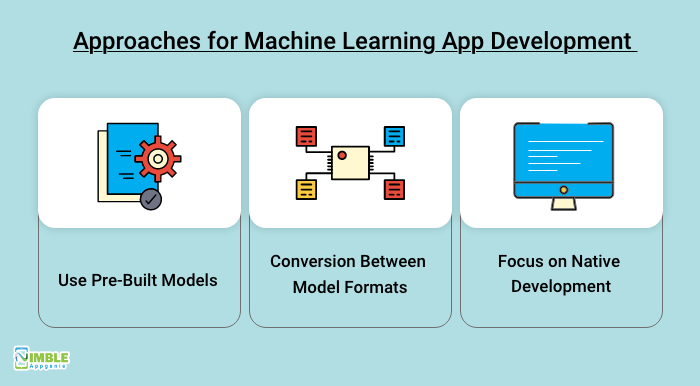
Machine learning and Artificial Intelligence App Development are very strategic and smart software techniques that must be integrated into your app very smartly. Here, I’ve discussed significant models that can be introduced while doing machine learning app development. Let’s have a look at each one by one.
1. Use Pre-Built Models
Using pre-built models is a shortcut way of building machine learning apps. There are already many pre-built models available in the market; you only need to replicate them and then introduce them in your mobile app. Through this process of machine learning app development, you can save ample time by skipping finding data and information, training the machines, and doing accuracy testing as it is already done.
Furthermore, always keep in mind that you go for the models that are rich in data and have good results and stunning response rates. As you can not set the foundation of your machine learning app on a weaker model because it would collapse.
ML Kit by Firebase, Cloud AI by Google, Core ML by Apple are the following best models you can rely on for your machine learning app development. However, it is recommended that you hire machine learning app developers even in the pre-built modes also. The reason is that they know what and how to fix and optimize everything to provide you with good functionality and the best results.
2. Conversion Between Model Formats
You might hire developers to do machine learning app development for the android platform. But if they do not know how to do it over iOS. Therefore, it is of no extensive use unless you plan to launch your app on android only. So, it is mandatory to hire skilled developers who have knowledge of every platform to transfer different learning models on multiple platforms to perform the best results. Many different tools are available like Caff and Keras that don’t export models directly.
So, in machine learning app development. Always adopt a step-by-step approach where each model used in the ML (machine learning) module is converted from one format to another. To show similar results on multiple platforms, keep checking out suitable converters that enable the model conversion. It is a tip that will become handy in your development process.
3. Focus on Native Development
While cross-platform apps seem appealing and attractive initially, they’re more likely to cause issues later on, especially when developing performance-driven apps. Machine learning and Artificial Intelligence development technology provide efficient and proficient services based on its search from the data set. However, the cross-platform transfer may weaken your machine learning process. But, if you want to develop an app that should be known for good user experience, robustness, flexibility, and accurate results, I suggest developing the app from scratch.
Native applications are rapid, responsive, and offer a significant user experience. Moreover, these apps can also access APIs and unique elements optimized for various devices. As a result, they run efficiently and seamlessly.

Stepwise Guide For Machine Learning App Developments
1. Selection and Formulation of Problem Statement
The most crucial step to any machine learning or data science project is to make sure you have one problem statement in your mind, and you research continuously regarding the same. Always select your problem statement that you feel is a small step above your skill level. For example, if you are just a beginner starting your machine learning app development journey, pick a slightly complex beginner-level project. However, let us say something like a simple linear regression project should also satisfy.
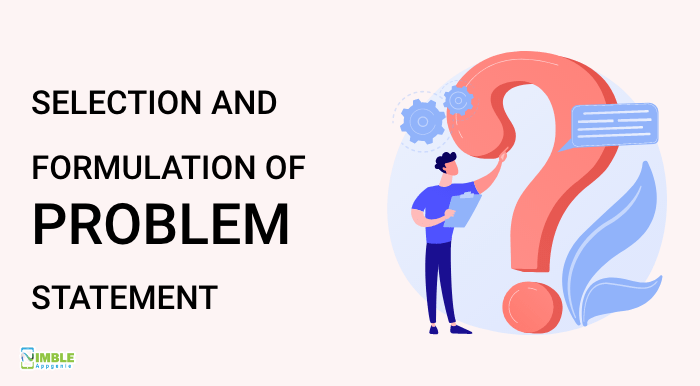
First, understand your skills and keep working on improving them. If you have completed some basic beginner-level projects, aim to shoot a bit higher for some intermediate-level projects. Ensure you have done extensive, deep, and thorough research on the project you choose to take up and persevere until you finish your machine learning or data science projects.
2. Developing and Strategizing Plan
Now that we have a transparent image of the project ideas to implement, the next step is to formulate the strategy and plan accordingly for the efficient mobile app development process. It will help if you read more via google searches, research papers, especially on Google Scholar, or by watching YouTube videos online. Always have detailed knowledge regarding your project before moving towards the following steps and starting the actual implementation of your development process.
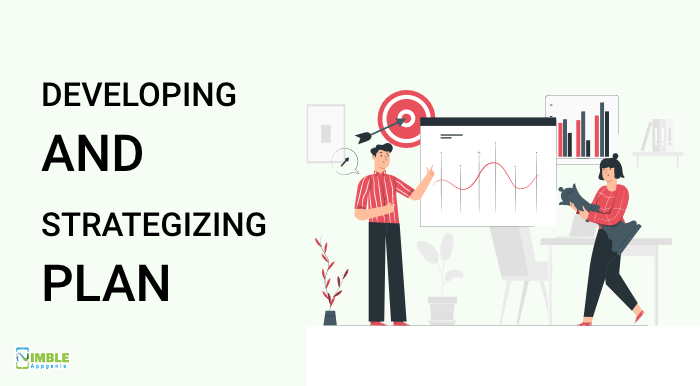
Before starting development, always estimate the cost for each of the tasks and applications to perform. Then, after evaluating cost, move towards the number of resources and time required for the computation process. Moreover, this estimation does not need to be 100% accurate.
3. Gathering Data
After analyzing your plan it is important to gather data before starting implementing your data science or machine learning project. Data collection is the vital process of gathering and measuring information on targeted variables in an established system. Enabling one to answer relevant questions and evaluate outcomes. Google searching is the best and most common way to look for new resources.

Sometimes you can find fascinating datasets on GitHub as well. In addition, Kaggle offers some of the best data and datasets options for each of the particular competitions that it holds. If you are looking to do NLP (natural language processing) projects. You can use Wikipedia or other similar sites to extract data via web scraping.
Once you gathered all the information and data together. You need to filter it out and store the valuable database for machines to adapt, learn, and perform the desired results.
4. Preparing and Analyzing DataSets
Only collecting the relevant data & information and then filtering it out is not enough. You have to ask the mobile app developers to convert it into the language in which machines can understand and learn. By developing a data pipeline on machine learning needs, it is possible.
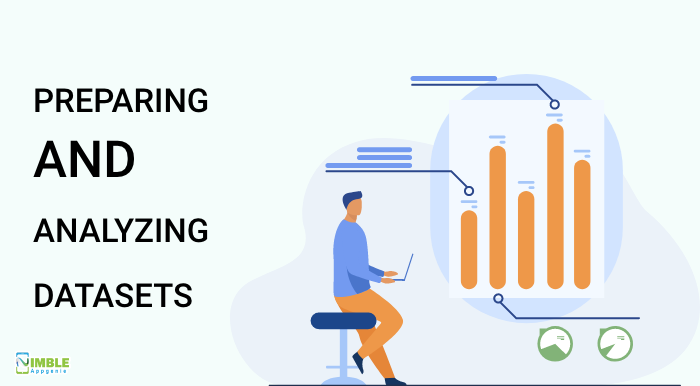
Visualization is a notable aspect of any data science project. For example, if we talk about the subject of Statistics, exploratory data analysis is an approach that analyzes data sets to summarize their main characteristics, usually with visual methods. Analyzing data in machine learning projects is essential to get a detailed understanding of the data at hand.
5. Pre-processing Datasets
Pre-processing of the datasets is an essential part of data science. After gathering data and analyzing datasets, it is not necessary that the data available to us is always clean. Don’t misunderstand the word “clean.” In this reference, the meaning of clean is the selective data that is of use to the task. There are many redundancies in the naturally available data that must be removed to have an overall clean dataset to work with.
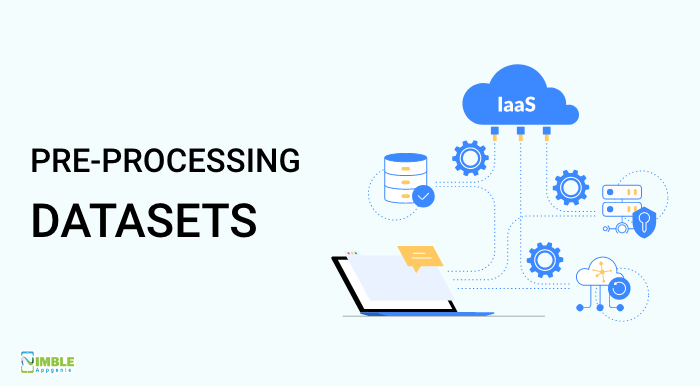
In the data mining process, Data pre-processing is an essential step. The phrase “garbage in and garbage out” is especially applicable to machine learning projects and data mining.
6. Constructing Structure
After the pre-processing step, the next step is to construct the structure for the model you plan to develop. This step can stand for several things, like if you are working on a machine learning problem, you want to complete computing of all the necessary parameters as other requirements.
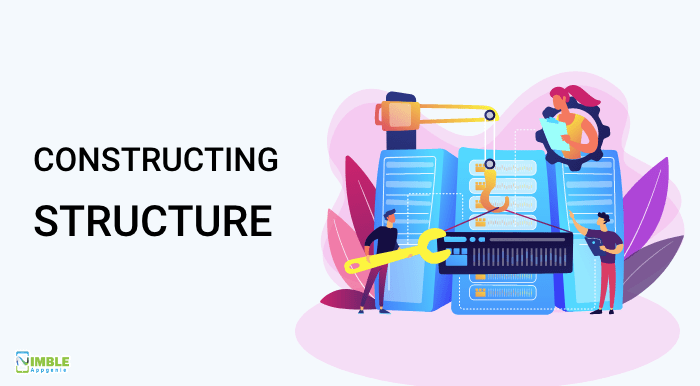
Don’t wonder what the other requirements are?
Feature scaling, encoding the variables, choosing the hyperparameters, tuning the model, splitting the data into train, test, or validation accordingly are the other requirements.
While constructing the structure, don’t wait for the next phases. First, decide the entire structure and the process that will be used in the overall implementation. Then move towards the design of your modeling approach and build a final pipeline to start developing your models.
7. Developing Machine Learning Model
This step is the most interesting part of the process of machine learning app development. Designing the appropriate model for the excellent performance of your task is the most vital aspect of machine learning. Therefore, it is imperative to choose the suitable algorithm for a particular task and design a concise architecture to solve the problem.
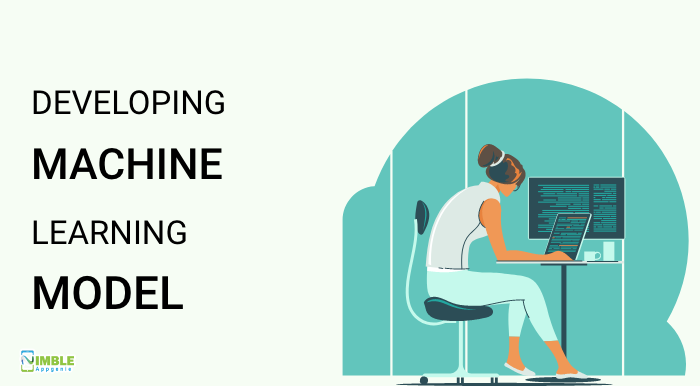
By selecting the right algorithm, you can prove to be a best-fit approach. You can construct an architecture by sequential, functional, or custom methods to develop your custom model from scratch in machine learning. Also, you can utilize many transfer learning models available to simplify your task. The development of the models is the most crucial step because after developing the model. It will be trained, tested, and deployed.
8. Train The Machine Learning Model
Training the model ensures that we find an almost perfect fit with high accuracy and low losses. It is also making sure that there is no overfitting or underfitting.
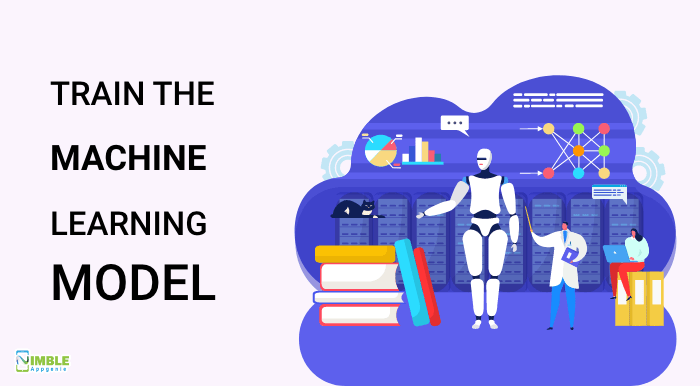
Overfitting is a situation where your model fits so well that it is even considering the outliers, noise points, and causing inaccuracies in the prediction task. On the other hand, Underfitting means that the model developed is underperforming, and it does not classify things accordingly and then solve the problem as required. Training a model means learning and determining good values for all the weights and the bias from labeled examples.
9. Test The Created Model
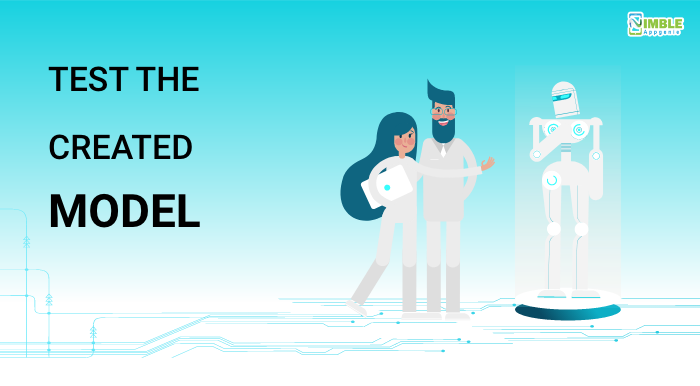
For testing the model, you can use graphs to validate these tests and make sure the model is performing as desired. You can make your custom graphs with the help of the matplotlib library offered by python for machine learning projects. These graphs should be able to provide a detailed and descriptive approach to how the models developed will perform. You can also do further analysis by using the methods of AB testing before the deployment of your models.
10. Deployment of The Model

The deployment step is the final step of any model constructed. If you have completed developing your model, this is an optional step if you want to keep it with yourself only or deploy it to target a wider audience. The deployment methods vary from deploying it as an application that can be transferred across by using the AWS cloud platform provided, or by using an embedded system, or by amazon for deployment.
 Check this in-depth 7 Real Life Use Cases of Object Detection Using Machine Learning Check this in-depth 7 Real Life Use Cases of Object Detection Using Machine Learning |
|---|
Conclusion
In this blog, I’ve covered the step-by-step guide for machine learning app development. Each step is significant in developing the perfect architecture of a successful machine learning project. Also, it is essential to follow each of the mentioned steps in the same order as presented above.
I hope now it’s clear to you how to develop a machine learning app efficiently. Machine Learning is becoming the future of the advancement of mobile app development. But still, if there are any doubts, you can contact us.
We, at NimbleAppgenie, have Mobile app development teams that are sound with ML technologies. As a result, it has become our standard practice to build ML products faster and efficiently. We are an extremely professional Machine learning App Development company that provides ML development services to innovative companies around the globe.

Niketan Sharma is the CTO of Nimble AppGenie, a prominent website and mobile app development company in the USA that is delivering excellence with a commitment to boosting business growth & maximizing customer satisfaction. He is a highly motivated individual who helps SMEs and startups grow in this dynamic market with the latest technology and innovation.
Table of Contents




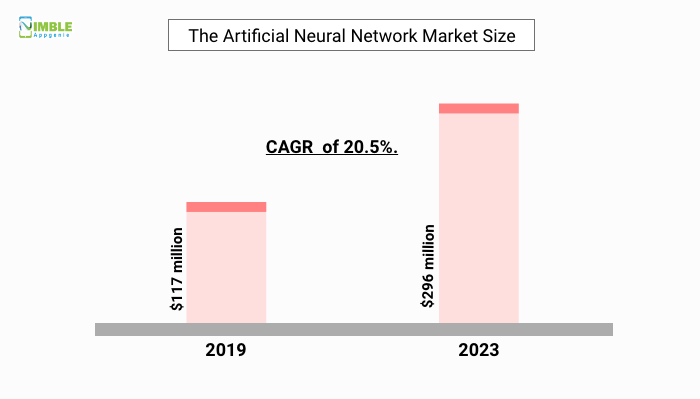
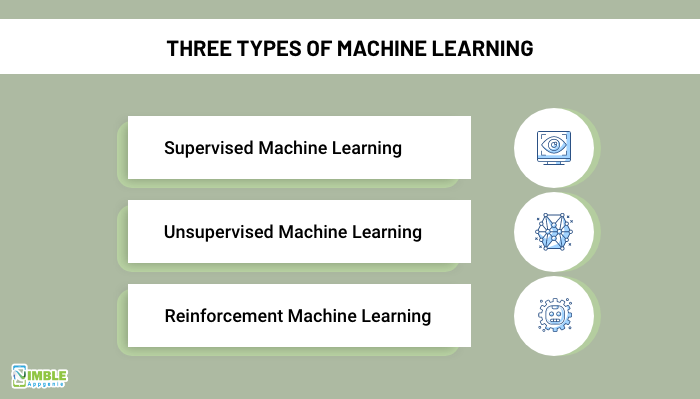
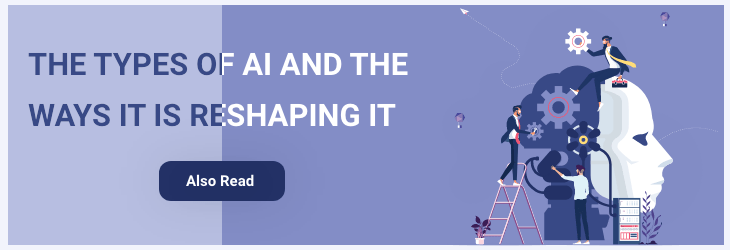
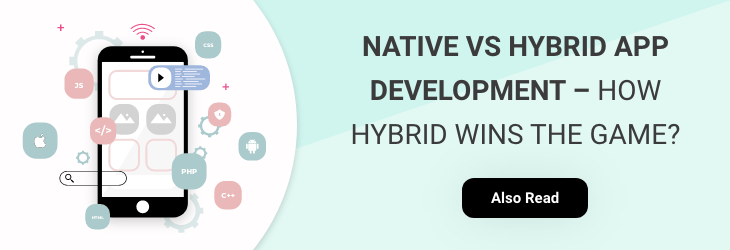
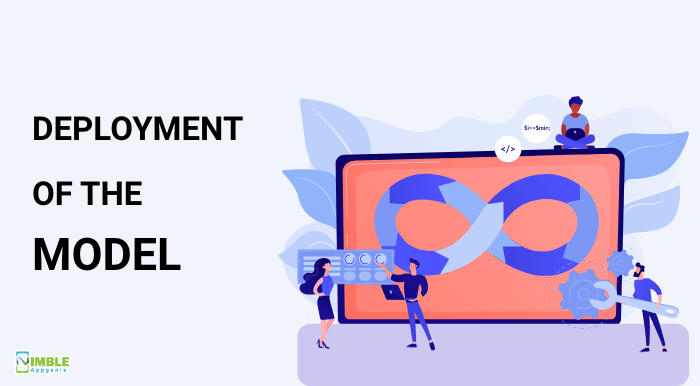








No Comments